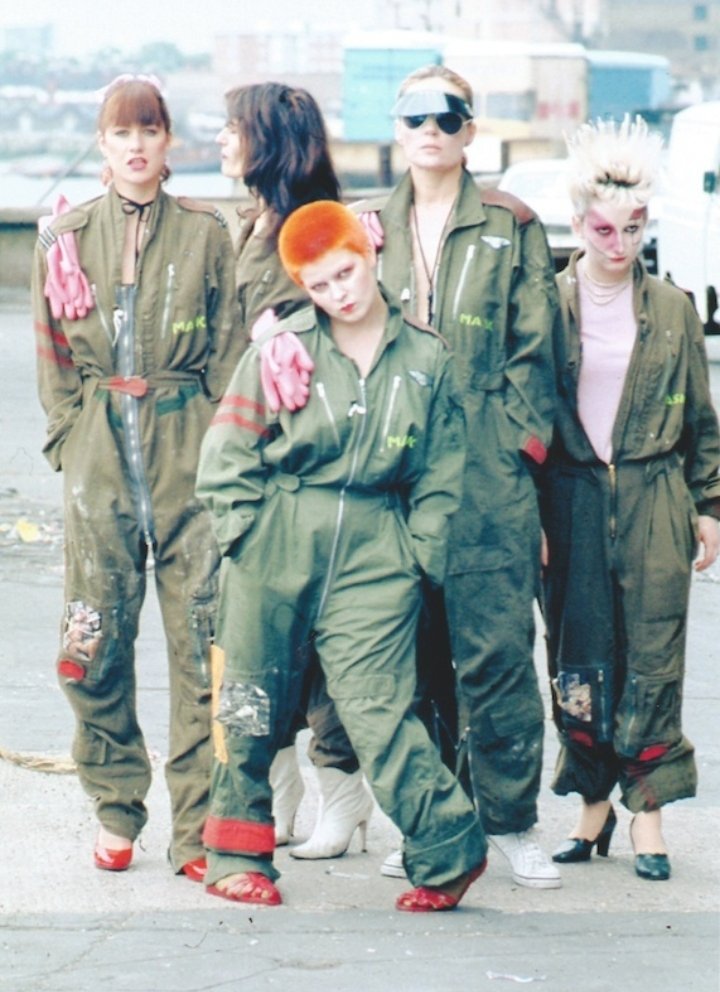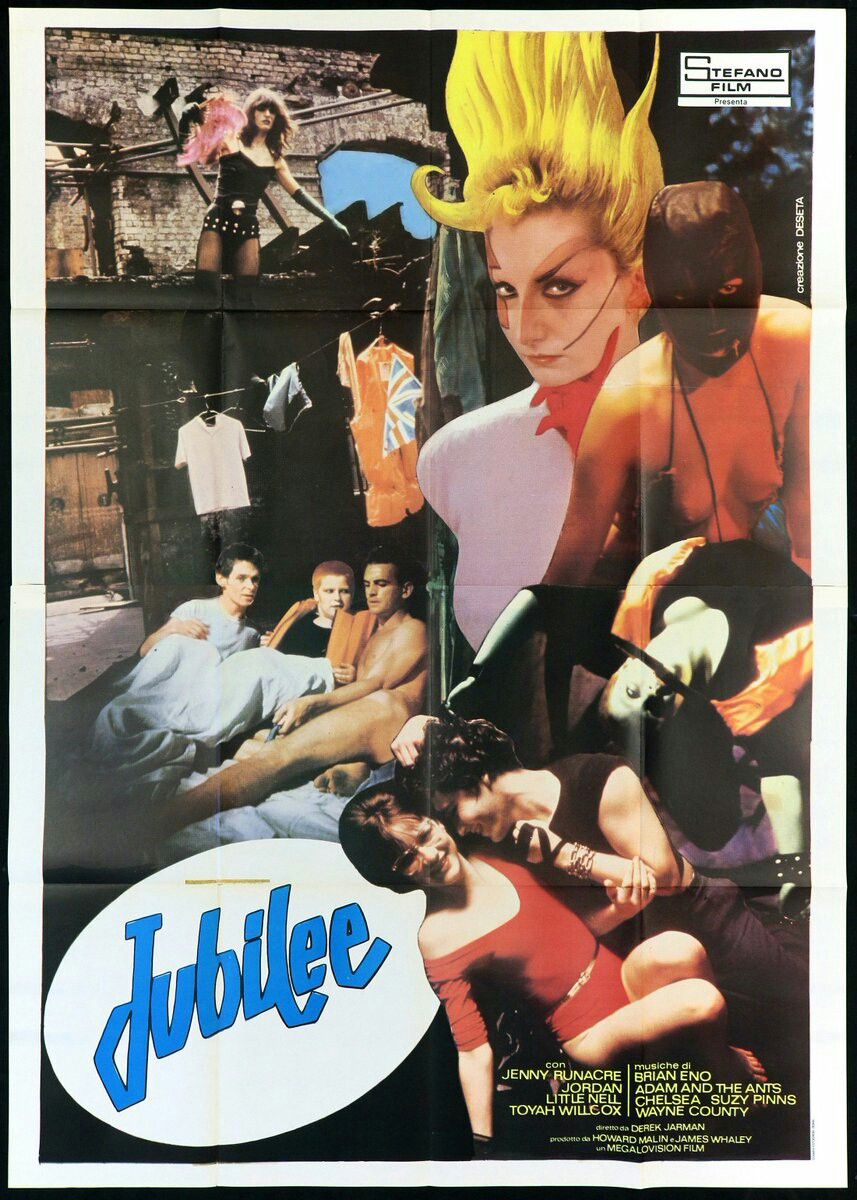There are very few good punk films. The Great Rock & Roll Swindle and Breaking Glass were patchy swan songs for a movement in decline. But one film at least tried to catch the ‘spirit’ of punk at the time: Dereck Jarman’s Jubilee.
Let’s take a look at it...
Let’s take a look at it...
Derek Jarman was not a punk in 1977; he was a 36 year old well educated stage director who had recently directed his first feature film Sebastiane – a homoerotic and explicit take on roman soldiers with dialogue in Latin. 

But by 1977 punk’s blend of nihilism, negation and sloganeering had captured his attention; he had a kind of appalled fascination for what he had earlier called “petty bourgeois art students… in the business of reproducing a fake street credibility." 

Jordan Mooney, a model from Vivienne Westwood’s Sex boutique, had also caught his eye, especially after she had carved the word 'FUCK' into a young Adam Ant’s back with a razor blade as a fashion statement. Jarmen was keen to build on this destructive energy. 

So he began recruiting punks from the King’s Road scene with the promise of parts in an upcoming movie, a celebration of destruction and a critique of both modern Britain and the punk movement itself: Jubilee.
Shot over six weeks on a budget of £200,000 its production process was certainly punk; haphazard, chaotic and using whatever scenery and locations were available for free. The money frequently ran out and the actors were paid a pittance… 

…but it was also a gloriously chaotic affair; provocative, outlandish and ridiculous. It bundled together punk rock, urban decay, S&M, the occult, violence and political sloganeering into a kind of am-dram critique of outrage culture. 

The plot of Jubilee is simple: there isn’t one. The film is pointless and episodic. Some things happen, but with no rhyme or reason. Elizabeth I and her occult philosopher John Dee are led by the spirit Ariel to view her realm in the future. It’s awful. They go home. 



But first they meet a gang of murderous female hooligans living in a squat: Bod (short for Boadicea), Crabs, Mad, Chaos and Amyl Nitrate. 

Adam ant turns up, as does Siouxsie Sioux and the Slits. People are strangled, petrol bombed, seduced, burnt in bins, make records, sell out, fight the police, have sex with the police and appear on TV. Westminster Abbey becomes a disco and Amyl sings a punk Rule Brittania.
The film was a break-out role for Toyah Wilcox, playing pyromaniac Mad. Richard O’Brien turned in a gleeful performance as John Dee. Everyone else… well it’s all a bit sixth-form drama project. But there’s plenty of nudity to go with the Situationalist slogans everyone shouts.
The film was released in 1978, shortly after the Sex Pistols had disbanded, and received some truly terrible reviews. Siouxsie Sioux said it was “hippie trash”; Vivienne Westwood claimed it was “the most boring and therefore disgusting” film she’d seen. 

‘Real’ punks were furious, shouting obscenities at the screening. “This isn’t PUNK!” was the cry. But actually it was; it just chose to bury the punk ideal as much as praise it. It’s certainly a strange classic of its time. 

But Jubilee is also a time capsule. London looks in ruins because it is; the docks are derelict, there’s still Blitz-damaged buildings in the streets. People are pale and angry and bored. That was 1977, before London cleaned up its act with an influx of money and redevelopment. 

In the end Jubilee needed to be made and Jarmen was probably the best placed person to make it. Does that mean it needs to be watched? Probably. But I wouldn’t show it back-to-back with Zardoz. That might be too much for anyone.
More stories another time...
More stories another time...

• • •
Missing some Tweet in this thread? You can try to
force a refresh























